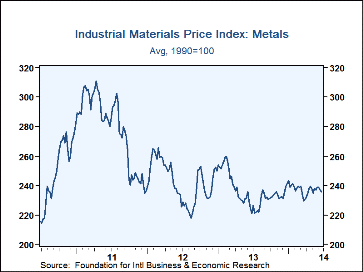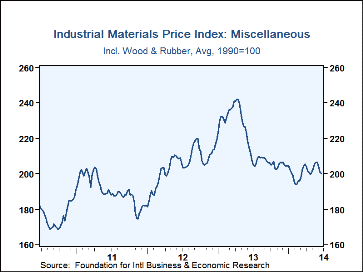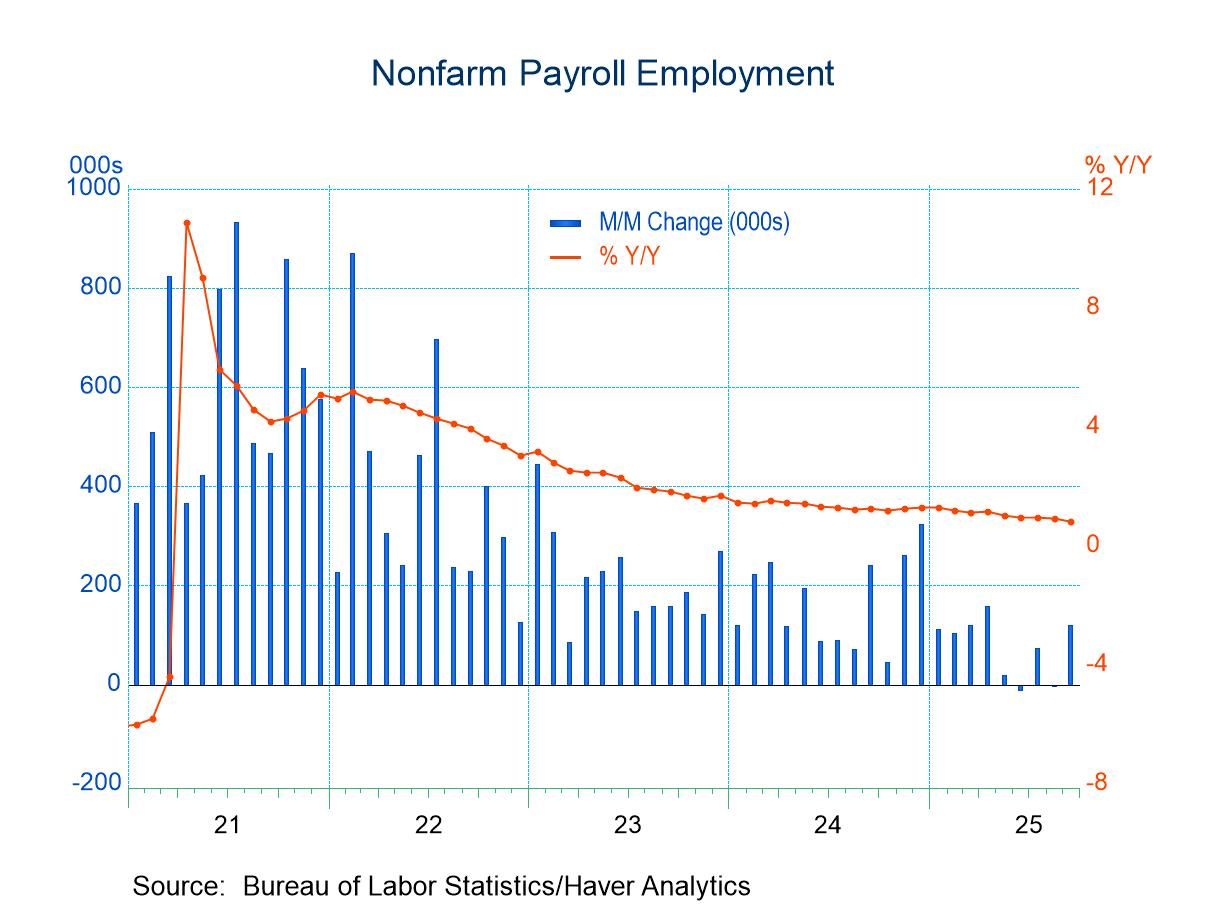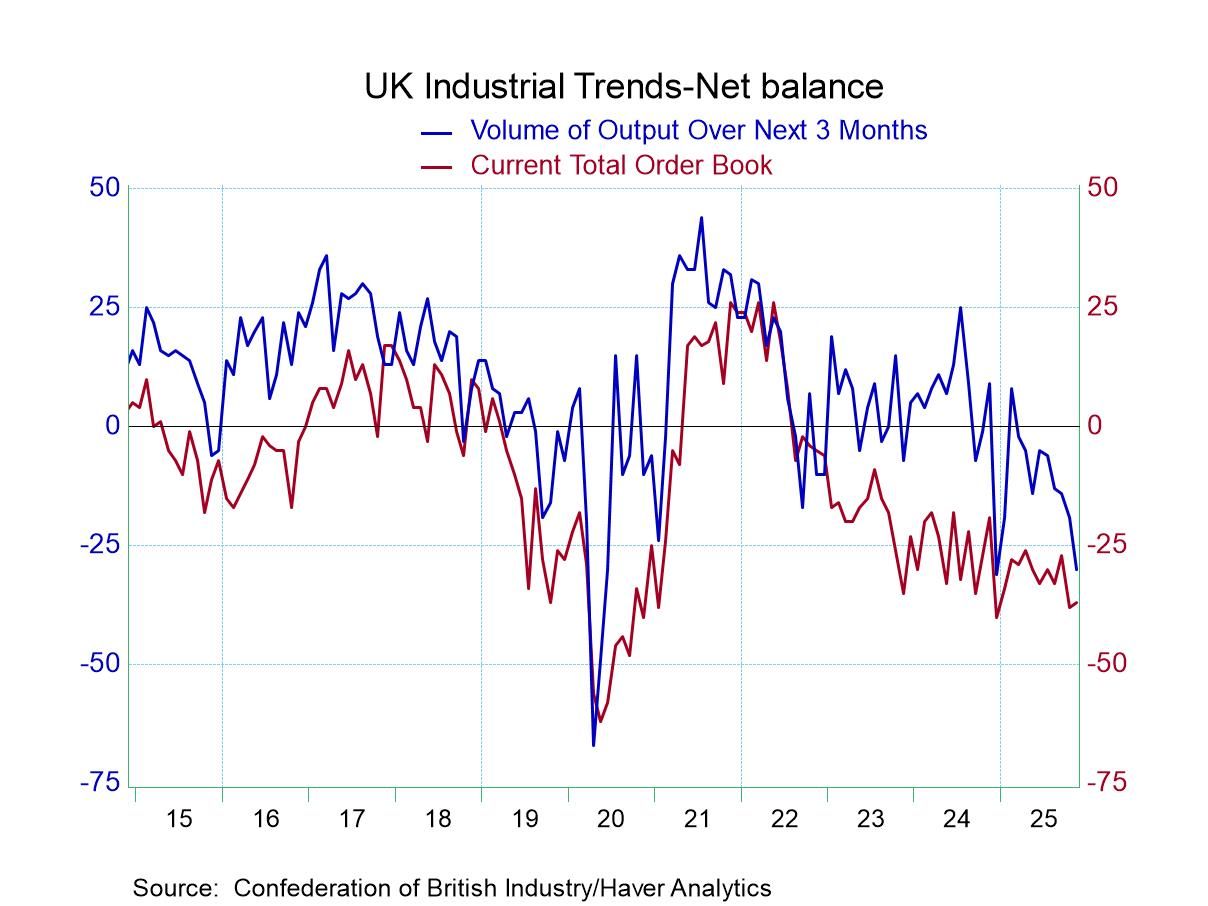 Global| Jun 20 2014
Global| Jun 20 2014FIBER: Industrial Commodity Prices Pull Back
by:Tom Moeller
|in:Economy in Brief
Summary
Industrial commodity prices recently have retraced gains logged since early-February. The industrial commodity price index, from the Foundation for International Business and Economic Research (FIBER), averaged 165.09 this week, down [...]
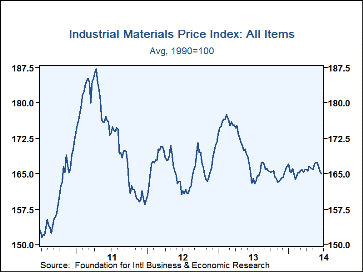 Industrial commodity prices recently have retraced gains logged since
early-February. The industrial commodity price index, from the Foundation
for International Business and Economic Research (FIBER), averaged 165.09
this week, down 1.4% (-0.1% y/y) from the high reached at the end of May.
It was the lowest level since the second week of February.
Industrial commodity prices recently have retraced gains logged since
early-February. The industrial commodity price index, from the Foundation
for International Business and Economic Research (FIBER), averaged 165.09
this week, down 1.4% (-0.1% y/y) from the high reached at the end of May.
It was the lowest level since the second week of February.
A 3.3% decline in prices in the miscellaneous category provided much of the weakness during the last month. Leading the shortfall was a 5.2% decline (-7.8% y/y) in prices for random lengths of structural panel composite wood. Framing lumber prices were off 2.6% (+12.1% y/y) in just the last two weeks but rubber prices increased 3.1% (-22.7% y/y) in that time period. In the metals group, prices have fallen 1.5% (5.1% y/y) during the last eight weeks. The decline was lead by a 4.8% drop (+9.2% y/y) in steel scrap prices. Prices were roughly 20% below the early-2011 high. Working the other way, aluminum prices have firmed 6.3% (1.1% y/y) since early-February and copper scrap prices rose 2.7% (-3.5% y/y). Textile prices declined 1.4% (-1.0% y/y) during the last six weeks led by an 8.4% drop (-5.3% y/y in cotton prices. Burlap prices also were down 2.8% (-1.6 y/y), though they've risen sharply since the early-September 2013 low.
Offsetting these weaknesses were crude oil & benzene prices which strengthened 1.8% since early-May. The gain was led by a 6.3% rise (9.8% y/y) in crude oil costs to $106.69 per barrel. Offsetting the gain, somewhat, was a 2.5% decline (+2.8 y/y) in prices for the petro-chemical benzene.
Renewed strength in industrial commodity prices is in the offing. The current industrial output projection from the National Association for Business Economics calls for 3.7% growth during all of this year then 3.5% growth in 2015. During the last ten years there has been a 52% correlation between the three-month change in prices and the change in factory sector output.
Commodity price data can be found in Haver's DAILY, WEEKLY, USECON and CMDTY databases.
| FIBER Industrial Materials Price Index (1990=100) | 06/20/14 | Y/Y % | 2013 | 2012 | 2011 |
|---|---|---|---|---|---|
| All Items | 165.09 | -0.1 | 169.0 | 166.4 | 173.0 |
| Textiles | 77.98 | -1.0 | 78.18 | 77.9 | 86.1 |
| Cotton (cents per pound) | 79.26 | -5.3 | 79.6 | 74.5 | 132.8 |
| Metals | 235.78 | 5.1 | 236.3 | 243.0 | 278.7 |
| Aluminum ($ per metric ton) | 1,816.30 | 1.1 | 1,846.3 | 2,019.6 | 2,400.9 |
| Copper Scrap (cents per pound) | 304.62 | -3.5 | 332.4 | 360.6 | 400.3 |
| Steel Scrap ($ per ton) | 357.00 | 9.2 | 346.0 | 366.7 | 412.6 |
| Crude Oil & Benzene | 214.91 | 4.1 | 207.7 | 204.1 | 199.3 |
| Crude Oil (WTI, $ per Barrel) | 106.69 | 9.8 | 97.9 | 94.2 | 95.0 |
| Miscellaneous | 199.93 | -5.5 | 218.3 | 205.3 | 190.6 |
| Framing Lumber ($ per 1000 board ft.) | 371 | 12.1 | 383 | 321 | 273 |
| Natural Rubber (cents per pound) | 147.60 | -22.7 | 189.9 | 211.9 | 262.3 |
Tom Moeller
AuthorMore in Author Profile »Prior to joining Haver Analytics in 2000, Mr. Moeller worked as the Economist at Chancellor Capital Management from 1985 to 1999. There, he developed comprehensive economic forecasts and interpreted economic data for equity and fixed income portfolio managers. Also at Chancellor, Mr. Moeller worked as an equity analyst and was responsible for researching and rating companies in the economically sensitive automobile and housing industries for investment in Chancellor’s equity portfolio. Prior to joining Chancellor, Mr. Moeller was an Economist at Citibank from 1979 to 1984. He also analyzed pricing behavior in the metals industry for the Council on Wage and Price Stability in Washington, D.C. In 1999, Mr. Moeller received the award for most accurate forecast from the Forecasters' Club of New York. From 1990 to 1992 he was President of the New York Association for Business Economists. Mr. Moeller earned an M.B.A. in Finance from Fordham University, where he graduated in 1987. He holds a Bachelor of Arts in Economics from George Washington University.



